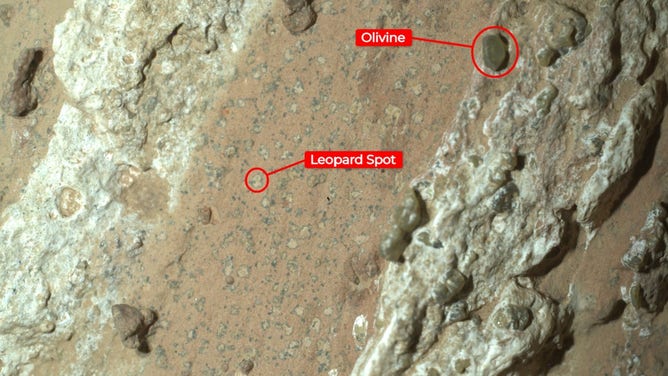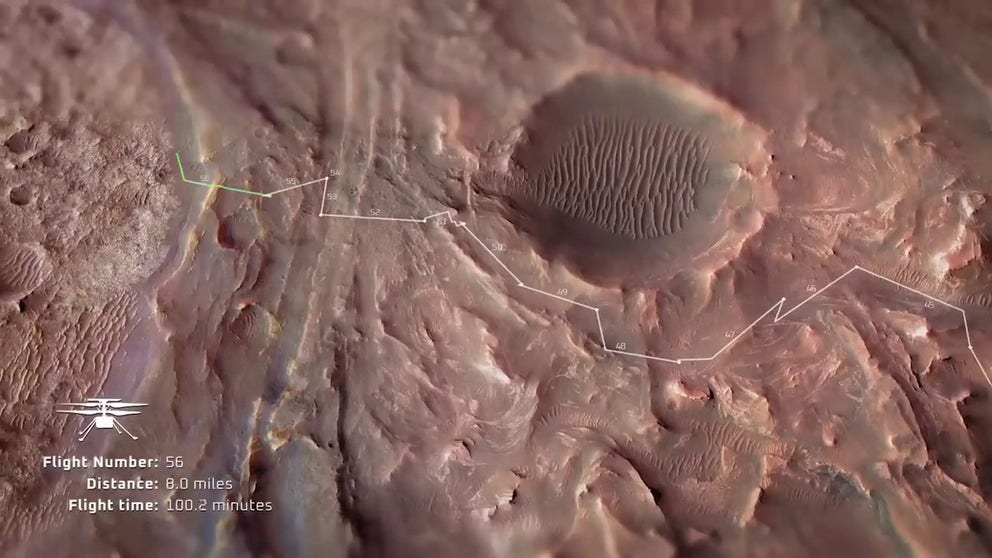‘Intriguing’ rock discovery on Mars shows possible indicators of ancient life
The space agency is currently reviewing options that it hopes would retrieve samples from Mars before 2040 and cost less than $11 billion.
NASA's exploration of Mars
NASA animation of Perseverance's mission on the Red Planet.
NASA has announced that a discovery made by its Perseverance rover on Mars could indicate the planet was home to microscopic life in the distant past.
Scientists said the rock, nicknamed "Cheyava Falls," features spots and vein-filled structures that may be signs of ancient biological activity.
The discovery was made in the Neretva Vallis, an ancient river valley on the Red Planet that is thought to have once contained water.
The sample is the twenty-second rock core collected by Perseverance, which has been exploring Mars since early 2021.
"Cheyava Falls is the most puzzling, complex, and potentially important rock yet investigated by Perseverance," Ken Farley, a scientist on the Perseverance project, said in a statement. "On the one hand, we have our first compelling detection of organic material, distinctive colorful spots indicative of chemical reactions that microbial life could use as an energy source, and clear evidence that water — necessary for life — once passed through the rock. On the other hand, we have been unable to determine exactly how the rock formed and to what extent nearby rocks may have heated Cheyava Falls and contributed to these features."
ROCK CRUSHED BY MARS ROVER REVEALS CRYSTALS NEVER BEFORE SEEN ON RED PLANET

NASA’s Perseverance rover discovered "leopard spots" on a reddish rock nicknamed "Cheyava Falls" in Mars’ Jezero Crater in July 2024.
(NASA)
Mars is thought to have formed some 4.6 billion years ago and is the most explored planet in the solar system.
The space agency says its missions have found evidence that the planet was once much wetter and warmer, with a thicker atmosphere, but it has evolved over its long history.
Scientists caution that to fully understand the chemical reactions that might be at play, they’ll need to examine and perform tests on the samples, which can’t be done with the rovers on the planet.
"We have zapped that rock with lasers and X-rays and imaged it literally day and night from just about every angle imaginable," Farley stated. "Scientifically, Perseverance has nothing more to give. To fully understand what really happened in that Martian river valley at Jezero Crater billions of years ago, we’d want to bring the Cheyava Falls sample back to Earth, so it can be studied with the powerful instruments available in laboratories."
NASA SEEKS NEW IDEAS FOR MARS SAMPLE RETURN MISSION DUE TO BUDGET CONSTRAINTS
NASA has been working with its counterparts at the European Space Agency to develop a plan that would collect Perseverance’s samples and return them to Earth.
Initially, the space agency was targeting a liftoff date in 2027 or 2028, which would have resulted in a return flight about five years later, but designs and budget constraints ballooned both the costs and launch window.
An independent review in late 2023 estimated the mission would not be achievable until 2040 and would cost over $11 billion - a price tag and timeline NASA said was not in its interest.
"That is unacceptable to wait that long," NASA Administrator Bill Nelson publicly stated after the report. "It’s the decade of the 2040s that we’re going to be landing astronauts on Mars."
By all accounts, the retrieval mission would require the launch of multiple spacecraft - one that would collect hermetically sealed tubes and another powerful enough to escape Mars’ gravitational pull and safely re-enter Earth’s atmosphere.
Watch Ingenuity helicopter's 72 flights on Mars
Designed to be a technology demonstration that would take five flights in 30 days, NASA's Ingenuity helicopter eventually flew more than 14 times farther and logged more than two hours of total flight time. This video shows all 72 flights on Mars, including the final flight on Jan. 18, 2024. (Video: NASA/JPL-Caltech)

